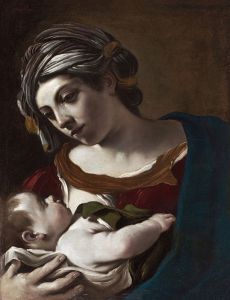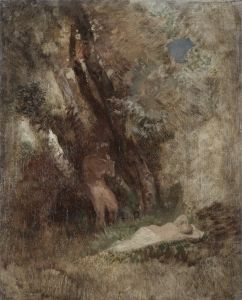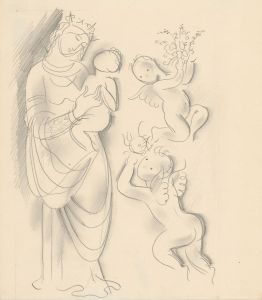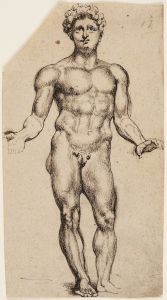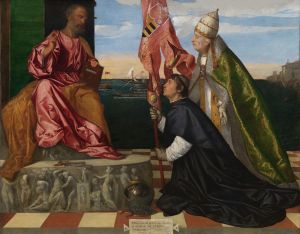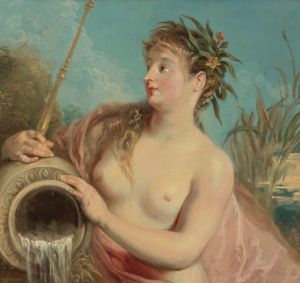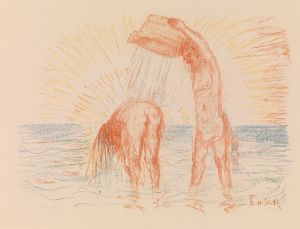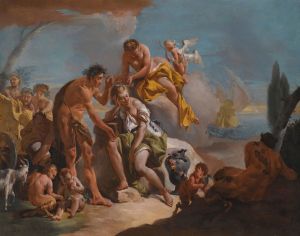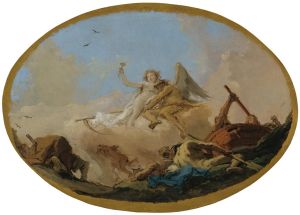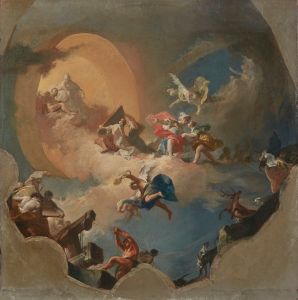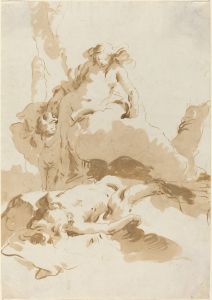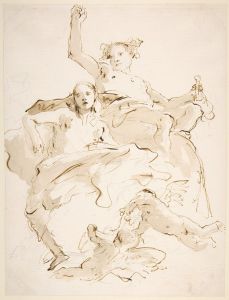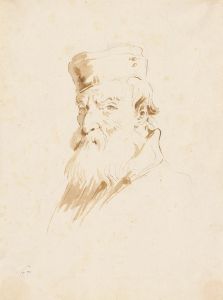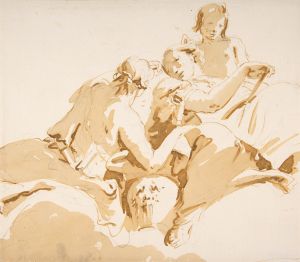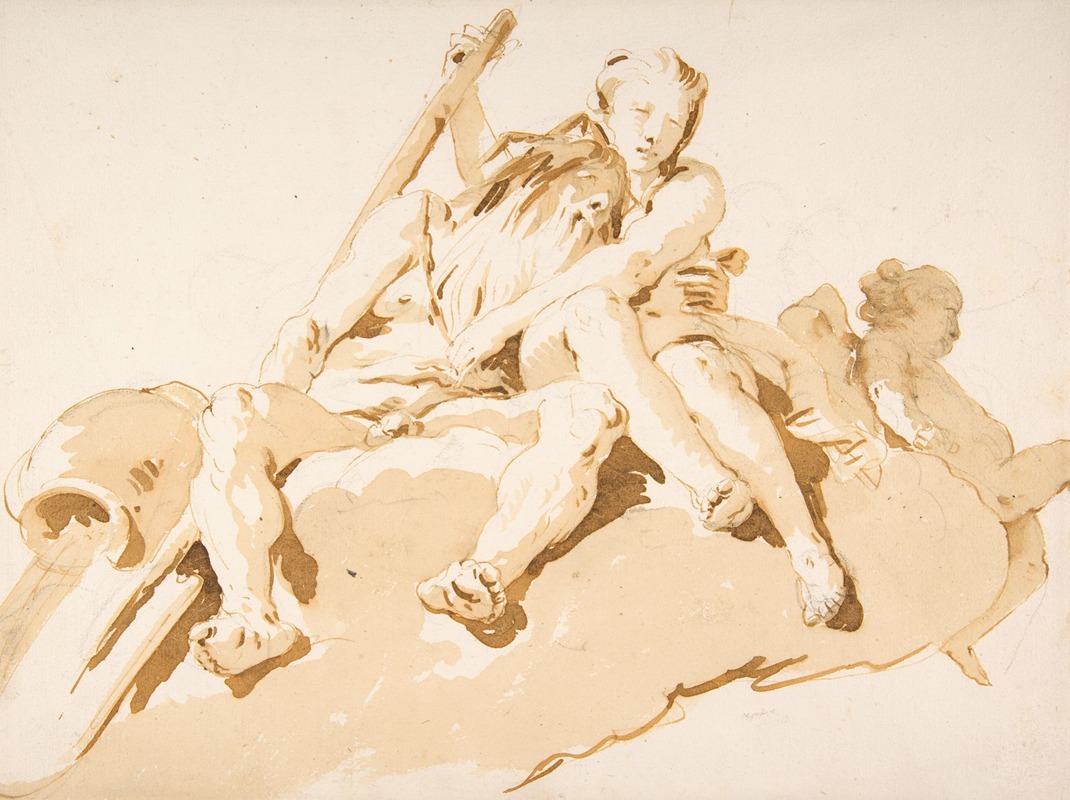
Seated River God, Nymph with an Oar, and Putto
A hand-painted replica of Giovanni Battista Tiepolo’s masterpiece Seated River God, Nymph with an Oar, and Putto, meticulously crafted by professional artists to capture the true essence of the original. Each piece is created with museum-quality canvas and rare mineral pigments, carefully painted by experienced artists with delicate brushstrokes and rich, layered colors to perfectly recreate the texture of the original artwork. Unlike machine-printed reproductions, this hand-painted version brings the painting to life, infused with the artist’s emotions and skill in every stroke. Whether for personal collection or home decoration, it instantly elevates the artistic atmosphere of any space.
Giovanni Battista Tiepolo, an eminent Italian painter of the 18th century, is celebrated for his vibrant frescoes and masterful use of color and light. Among his extensive oeuvre is the work titled "Seated River God, Nymph with an Oar, and Putto." This painting exemplifies Tiepolo's skill in creating dynamic compositions that blend mythological themes with a sense of grandeur and movement.
Tiepolo was born in Venice in 1696 and became one of the most prominent painters of the Rococo period. His works are characterized by their dramatic flair, vivid colors, and the ability to convey complex narratives through allegorical figures. "Seated River God, Nymph with an Oar, and Putto" is a testament to these qualities, showcasing his ability to bring mythological subjects to life with a sense of immediacy and vitality.
The painting features a river god, a common figure in classical mythology, often depicted as a robust male figure symbolizing the power and life-giving properties of rivers. In this work, the river god is seated, exuding a sense of calm authority. Accompanying him is a nymph, a mythological spirit of nature typically associated with bodies of water, who holds an oar. This element suggests a connection to navigation or the control of water, reinforcing the theme of the river as a vital force. The presence of a putto, a cherubic figure often used in Baroque and Rococo art to symbolize innocence or divine intervention, adds a playful and light-hearted touch to the composition.
Tiepolo's use of light and shadow in this painting is particularly noteworthy. He employs a technique that creates a sense of depth and three-dimensionality, drawing the viewer's eye across the canvas and highlighting the interactions between the figures. The color palette is rich and varied, with the use of blues and greens to evoke the natural setting of the river, while warmer tones highlight the figures and their divine attributes.
The painting reflects Tiepolo's deep understanding of classical mythology and his ability to reinterpret these ancient stories for a contemporary audience. His work was highly sought after by patrons across Europe, and he received numerous commissions for both public and private spaces. Tiepolo's influence extended beyond Italy, as his style and techniques were admired and emulated by artists throughout the continent.
"Seated River God, Nymph with an Oar, and Putto" is a fine example of Tiepolo's artistic legacy, capturing the essence of the Rococo period with its emphasis on elegance, movement, and the interplay of light and color. It stands as a testament to his mastery of the medium and his ability to convey complex themes with clarity and beauty.
Today, Tiepolo's works are celebrated for their contribution to the development of Western art, and they continue to be studied and admired for their technical brilliance and imaginative compositions. His paintings, including this one, remain a significant part of the cultural heritage of the 18th century, offering insight into the artistic and intellectual currents of the time.





